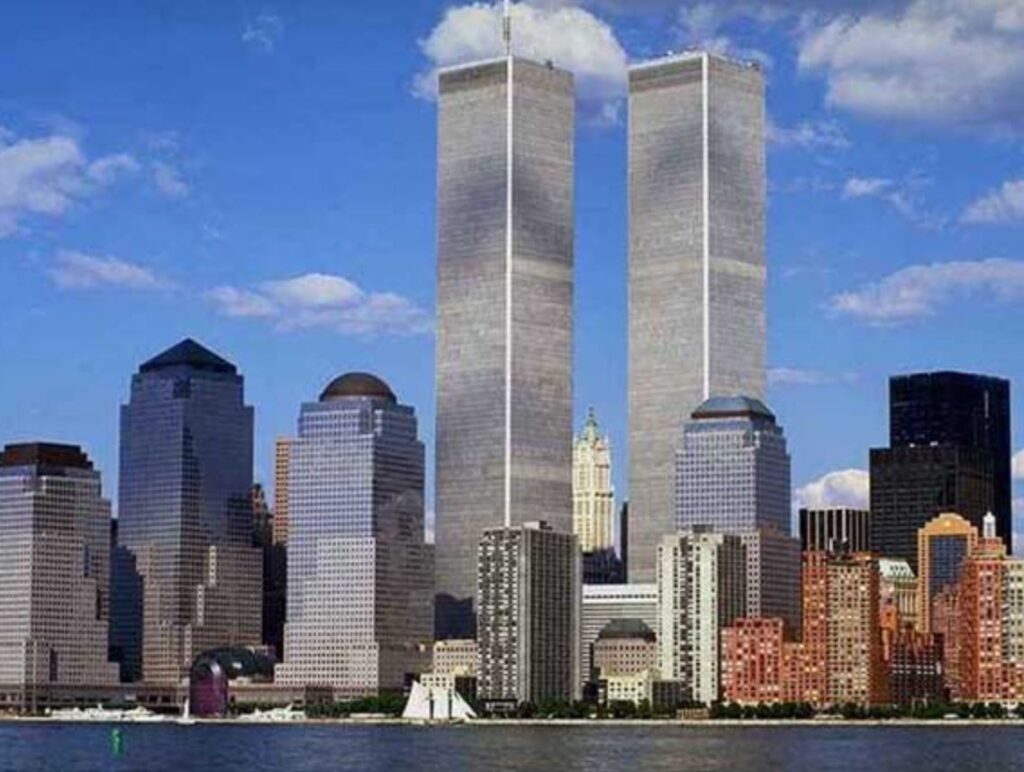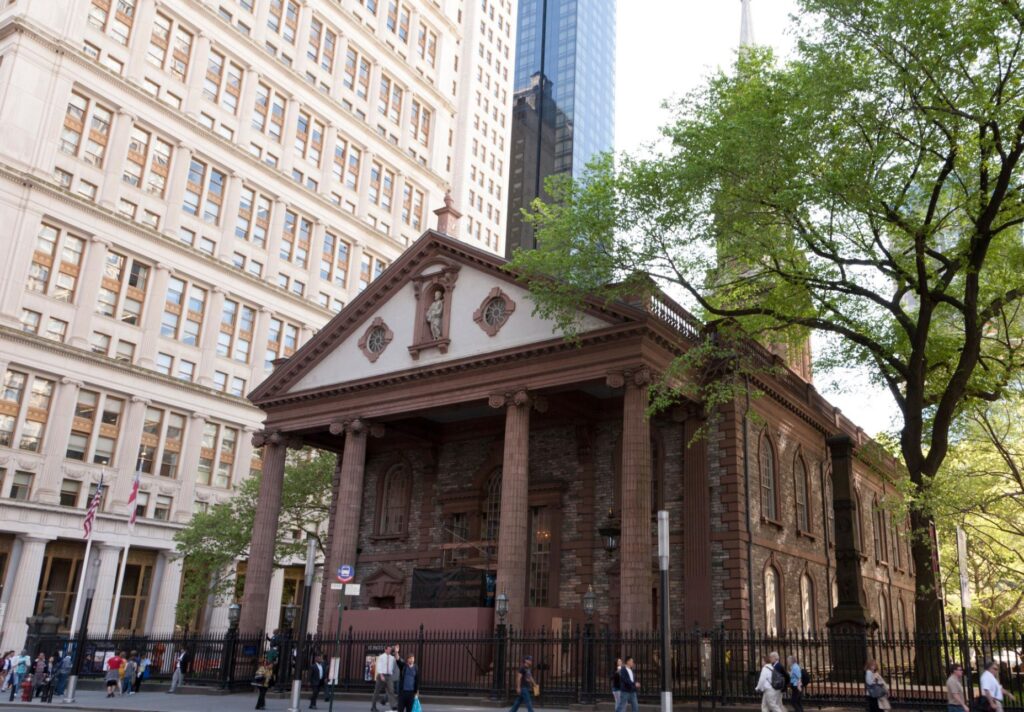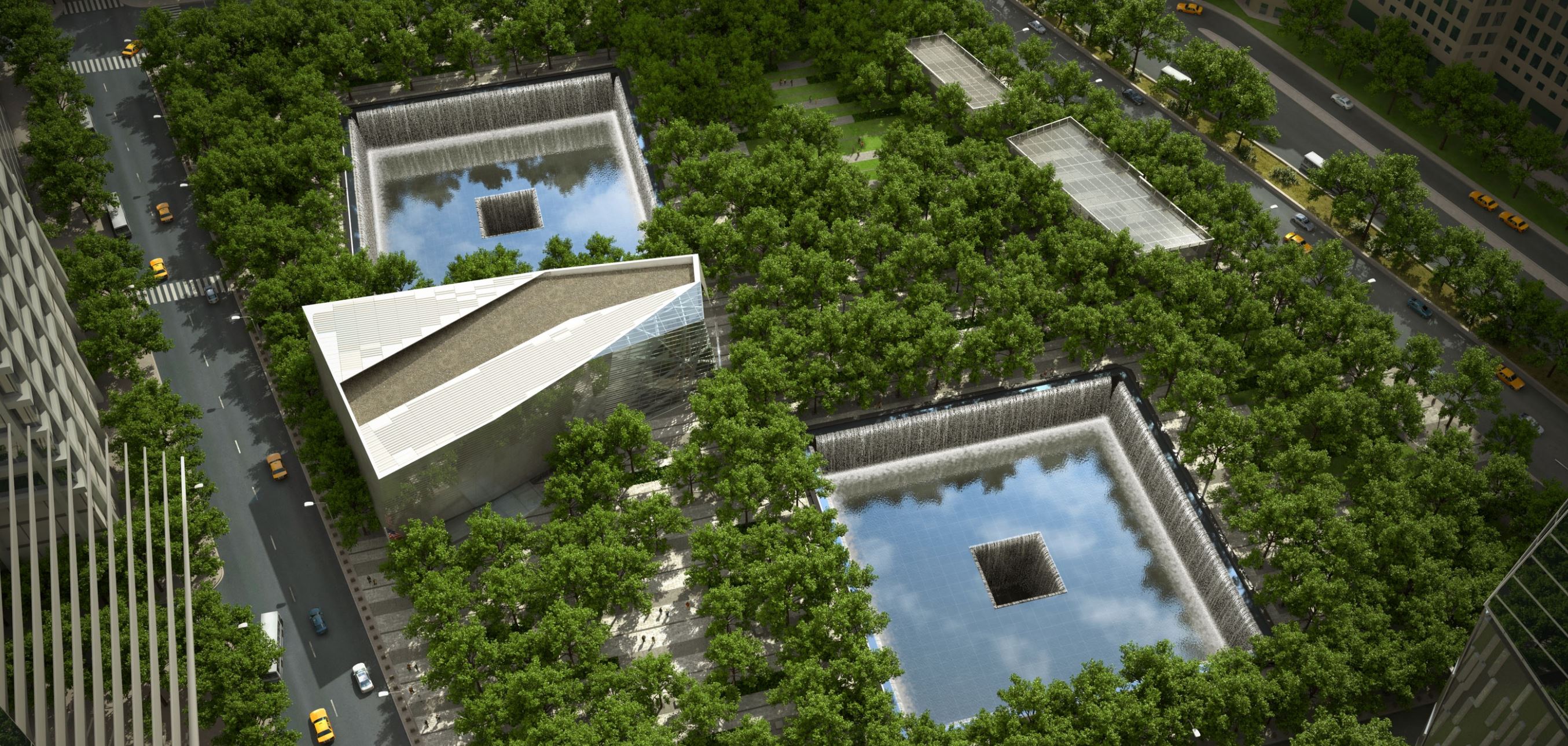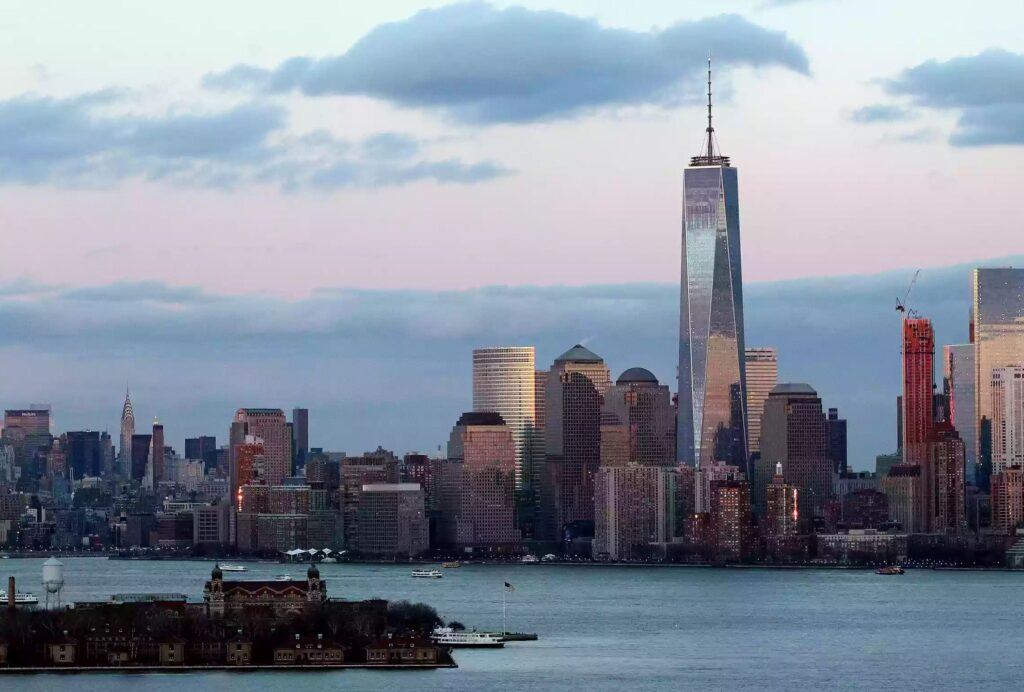9/11 Plus 19 Years
By Joyce Gold, Manhattan Historian
THE ATTACK
Beginning at 8:45 AM on September 11, 2001, two planes laden with 10,000 gallons of fuel ploughed into the two towers of the World Trade Center in Lower Manhattan. The structures housed major banks, brokerages, insurance companies, and law firms, as well as the Port Authority of New York and New Jersey, that had developed the Trade Center in the 1970s and owned the 16 acres of land now called Ground Zero.

Typically, 50,000 people worked in the Twin Towers, and 90,000 came to visit each day to dine, attend meetings, or enjoy the view from the observation deck. The attack set off a fire with temperatures that exceeded 1,000 degrees Fahrenheit. 2,250 people died that day, including 343 firefighters, who entered the burning towers, unaware that the buildings were already doomed. The two towers as well as the other 6 World Trade buildings were completely demolished. Dust blanketed the area.
Typically, 50,000 people worked in the Twin Towers, and 90,000 came to visit each day to dine, attend meetings, or enjoy the view from the observation deck. The attack set off a fire with temperatures that exceeded 1,000 degrees Fahrenheit. 2,250 people died that day, including 343 firefighters, who entered the burning towers, unaware that the buildings were already doomed. The two towers as well as the other 6 World Trade buildings were completely demolished. Dust blanketed the area.
IMMEDIATE RESPONSE
It was difficult to comprehend at first that the destination structures each day for streams of office workers had collapsed with so many people still inside. Outside the designated receiving hospital, St. Vincent’s in Greenwich Village, over a dozen medical personnel waited to help. But there were no bodies from the buildings to treat. Local residents fast lined up in front of the hospital volunteering to give blood, but remarkably there was little need for such donations.
Security was immediately tightened. No one without proof that they needed to be there could get within two miles of the site, and until November within one mile. “Missing” fliers papered the city, each filled with detailed descriptions of lost loved ones. For months New Yorkers showed their gratitude to the fire department. They applauded fire trucks passing on West Street and for a year kept leaving fresh flowers in front of all Manhattan firehouses.
People around the world sent items of support to St. Paul’s Chapel, the Episcopal structure across from Ground Zero. They sent paper cranes, and words of love, that were hung on the fence around the building. Police and firefighters from around the country came to the city to show they cared. U.S. corporations began holding conventions in town. Even on busy Wall Street, New Yorkers made sure to welcome visitors. But two groups took years to trust that the city was safe enough to return: student groups; and international travellers.
ONGOING ACKNOWLEDGEMENT
Manhattan firehouses bear plaques and images memorializing the fallen, and each year since then, at the site loved ones read aloud names of the dead. When the towers collapsed, a few girders fell in such a way that they formed a cross; for a time it remained on Ground Zero.
After that, it was taken a few blocks away to St Peter’s, the Roman Catholic church closest to Ground Zero. The Tribute in Light art installation of 88 vertical searchlights placed six blocks south of Ground Zero created two columns of light to represent the Twin Towers in remembrance of the attacks.

St Paul’s Chapel reopened by the end of 2001. Numerous tissue boxes appeared inside for the many crying visitors. A film displayed how the chapel housed and fed rescue workers, while benches scuffed by their boots remained unrepaired. The chapel exhibited teddy bears and other signs of caring sent to rescue workers. Trinity Church displayed a sculpture of a tree’s deep roots, honouring a sycamore in the St Paul’s churchyard that had protected the building from flying debris.
REAL ESTATE – COMMERCIAL AND RESIDENTIAL
Commercial space downtown was depressed for years. Only once major companies moved back did the market begin taking off. Merrill Lynch and American Express, whose world headquarters were just west of Ground Zero, moved their thousands of staff to New Jersey for a year but then showed faith in the neighbourhood and moved back.
Using generous government subsidies, Goldman Sachs built their new world headquarters just north of Ground Zero. The city and state were ecstatic that they wanted to move in, so quickly gave the company $115M in tax breaks and cash grants and later let it use $1.65 billion in tax-exempt Liberty Bonds to cover part of the building’s $2.4 billion cost.
Less than two months prior to 9/11 developer Larry Silverstein had rented what became known as Ground Zero from the Port Authority. He had won a $3.9B contract for a 99-year lease on the twin towers. After the attacks, he sued his insurance companies for $12.3B. Had it been a single incident or two separate incidents? After almost six years of litigation, he received nearly $4.6 billion and began constructing the new WTC 2, WTC3, and WTC4 buildings. The government gave Condé Nast magazine publishers a helpful deal to rent floors 20-41 in the new WTC 1. Their lease began to revive the downtown real estate market. Landlords of retailers had waited to sign ten-year leases until they had seen such signs of economic revival.
The government gave Condé Nast magazine publishers a helpful deal to rent floors 20-41 in the new WTC 1. Their lease began to revive the downtown real estate market. Landlords of retailers had waited to sign ten-year leases until they had seen such signs of economic revival.
Within a year residential prices in Tribeca, just blocks from Ground Zero, had shot up 12% over pre-9/11 prices: its large spaces were in demand despite the tragedy. And developers began converting commercial towers in the Financial District into apartments for people looking for good deals.
COMMERCE
Most stores in the neighborhood closed for at least a year. One of the biggest retailers nearby was J & R Music and Electronics.
There from 1971 to 2014, because of the dust after 9/11, they had to discard every piece of electronic equipment in the store.
Ultimately, they got out of the music and electronic business and into real estate. They replaced one of their previous structures with a 50-story, 110-unit, luxury condominium.
Alternatively, across the street from Ground Zero were two establishments that returned. The 40-year old Century 21 Department Store reopened in the summer of 2002; the company has since enlarged the store and opened additional branches.
One side of the Millennium Hilton Hotel was blown out when the towers fell. Hilton paid medical benefits for the staff while the hotel was shut. By May 5, 2003, the hotel had been rebuilt and reopened, and more than three-quarters of the employees returned. To help get shoppers back to nearby Tribeca, on May 8, 2002, Robert De Niro began the Tribeca Film Festival.
PUBLIC INCLUSION

The owners of the Ground Zero property, the Port Authority of New York and New Jersey, spent years deciding what to put on Ground Zero. They listened to many opposing points of view. Because of the unique trauma of the attack, neighbors felt the Port Authority should wait another 10 years before committing to a plan; but others wanted a plan while memories were still fresh.
Loved ones of the thousands who died said because there were no remaining bodies, only a memorial should be on the 16 acres; but business leaders argued that commerce must come back downtown. Art lovers insisted that art should be on the grounds. Some in the public said that if the new WTC 1 isn’t higher than the previous buildings, Al-Qaeda will have won; those in opposition asked, “Would you feel safe here going up that high?” The Port Authority listened carefully to all the concerns. Ten years later the 16-acre site reopened to the public with the following configuration:
- Half the area would hold the memorial.
- The above ground section of the museum, hundreds of trees, and Reflecting Absence, a pair of half-acre reflecting pools in the footprints of the towers. Surrounded by a list of the victims’ names. Each minute, 52,000 gallons of water pour into a void.
- The other half would be 4 new office buildings (the new WTC 1, WTC 2, WTC 3, and WTC 4). Hundreds of feet taller than the previous structures, the new WTC 1 is the symbolic height of 1776, evoking the year of the Declaration of Independence.
- Some still call that building “Freedom Tower” but it is no longer its official name. It’s officially called “One World Trade Center.”
EFFECTS AFTER 19 YEARS
- Heightened security. To enter most large office buildings these days everyone must sign in. Cars entering the World Financial Center are checked for bombs underneath the carriage.
- More residents in the neighbourhood. In 2000 Lower Manhattan had a residential population of 23,000. Now it is closer to 63,000. Government subsidies enabled lower prices that attracted new residents.
- A 24-hour mixed-use neighbourhood. For over a century it had been chiefly a business community that emptied out of most people by 6 PM every day. Now there is 24/7/365 activity.
- Change in type of retail. Before 9/11 stores mostly sold budget items to office workers; after 9/11 such stores as Tiffany, Hermes, and Pink opened to serve upscale residents.
- Chinatown depressed. Before 9/11 in nearby Chinatown, merchants sold high volume items with low mark-up primarily to tourists. Some of those stores went out of business, and higher rentals landlords pushed out factories in exchange for the more profitable office tenants.
- New tourist destination. Instead of the New York Stock Exchange being the number one tourist spot downtown, for security reasons that landmark was closed to the public. The Ground Zero memorial became visitors’ pilgrimage destination for lower Manhattan.
- A local church goes national. The demolished 1916 Greek Orthodox Church of St Nicholas is being rebuilt as the St Nicholas National Shrine at the WTC and will welcome visitors of all faiths who wish to reflect on the losses of September 11th.
- Re-mapped streets. Streets that had been de-mapped for the original WTC 1 are now cut through the property.
- Tourism doubled. In 2000 30,000 visitors came to New York; in 2019 it was 65,000, making the city the most visited in the United States.
Some of these changes were beginning before 9/11, but the trauma accelerated the transformation. Tragedy and hard times periodically hit cities. How the city handles these challenges creates the future.
Joyce Gold is president of Joyce Gold History Tours of New York, specializing in in-depth private walking tours of many city neighbourhoods. Email: [email protected] Call: 212 242 5762
